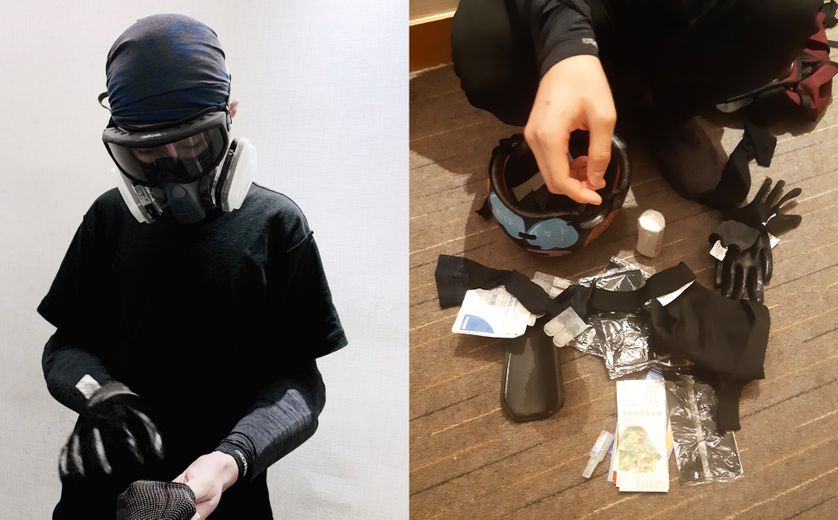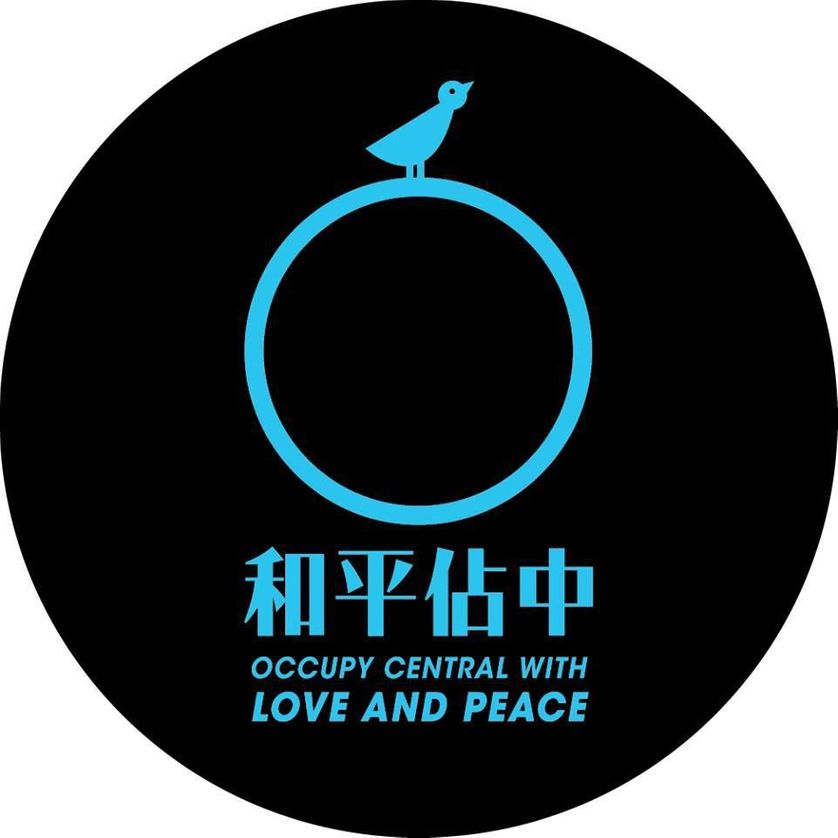
It is to defend these freedoms that the Hong Kong people sometimes manifest violently, as at the airport of the city or in the streets with some scenes of riots.
Meeting with young demonstrators who do not hesitate to radicalize and recall the peaceful actions of their elders, in 2014.
Violence as a means of expression
For weeks, especially at weekends, hundreds of thousands of people have been making their demands on the streets of the former British colony. For a long time peacefully and with in particular lasers to indicate the dangers, to dazzle the policemen and to prevent any facial recognition thanks to videosurveillance images.
But some finally chose strength.
Choy (pseudonym) is only fifteen years old, he shows his equipment to manifest: protections for the arms, a helmet, a mask against tear gas and gloves:
If I'm at the demonstration and leave my fingerprints, the police can find me.
Choy is one of those on the front lines. He decided to become a fighter, as he says, after watching a documentary on Netflix.
It was in Ukraine, there was the same kind of demonstrations as here. Lots of people died just for protecting things they were entitled to. What I learned is "do not be afraid to die".

Credits: Valérie Crova
–
Radio France
Violence is his means of expression against a government represented by a woman, Carrie Lam, designated by Beijing who turns a deaf ear to the demands expressed by citizens.
A few days ago, more than 1.7 million protesters came out peacefully. We did what she wanted from us, but she did not do what was expected of her. We are ready to go until all our demands are accepted.
Choy considers himself a Hong Kong citizen, not a Chinese citizen: "Do you know of another city that has its own flag, which has its own team at the Olympics? We never said that our goal is to be independent. I hate China, but we need it. "
Alice is less radical, although she understands that some use violence to express their anger. She is 26 years old. It was protests in 2014, when the Hong Kong occupied for more than two months areas of the city to ask already at the time the election of their head of government by universal suffrage.
We learned from our failures of the "Umbrella Revolution". We were too peaceful at that time. And we were not demanding enough, we were not pushing the government hard enough. So he did not have to answer us, or do anything. This time, we are in fact rather surprised to be able to still be very united and to see that the flame is still burning. I actually hope it's a revolution and not just a movement to change things.
This Monday, in "Le Temps du Debate", the new issue of Emmanuel Laurentin, Eric Sautedé, political analyst in Hong Kong, evoked the modes of action of the protesters: "It's a daily topic of conversation. Radicalization and more violent events did not occur until mid-July. And perhaps on July 1, when some demonstrators seized the local assembly, breaking the windows and degrading part of the premises."And to add:"The influences are mostly Western or Indian, there are references to Martin Luther King, Gandhi or Vaclav Havel. This goes back, of course, to the "umbrella movement" of 2014 which called for civil disobedience. One of his founding texts was just a reference to Martin Luther King. Today, it is rather a DIY, an adaptation of these registers. "
"The Umbrella Revolution": the pacifist model of today's students
The slogan of this late 2014 revolt, also symbolized by yellow ribbons, was more "democratic freedom". The civil disobedience collective Occupy Central with Love and Peace is at the heart of the mobilization, challenging a very restrictive and undemocratic political reform proposed by the Chinese Communist Party. For 79 days, students are chanting in the streets "rise up Hong Kong, get up freedomFor their "polite revolution", they have a "manual of disobedience" posted online by OCLP.

It is called the "Umbrella Revolution" because it was in this way that the protesters protected themselves from the tear gas used by the police to disperse them. In a CNN article, we also learn that, according to Bryan Druzin, an assistant professor of law at Hong Kong Chinese University, the umbrella was not only functional, but had "a certain emblematic resonance, in the sense that it symbolized passive resistance. Hong Kong is a city that periodically flies under umbrellas against the seasonal typhoons that threaten it. The storm is another storm that Hong Kong is trying to cross."
The mobile phones were also a symbol of rallying, with a very strong use of social networks and words shards for some currently reused as #HongKongprotests.
Brian, one of the students, aged 19, told our special correspondent Philippe Reltien at the time:
We came because it is a peaceful way to show them that we remain interested in politics. We block the streets for the public to come out and ask them to answer us.
Chan affirmed to him: "Tian'anmen were also students and they were shot. Today it is more peaceful. The central government is not the same as twenty-five years ago. Here, we would not allow people to die."
Peter to bid: "We can serve as an example, if everyone stays calm and not violent. _We hope to get something in the calm_e. "
Beijing will not give up anything.
Source link
https://www.franceculture.fr/societe/hong-kong-des-manifestants-desormais-prets-a-la-violence




















